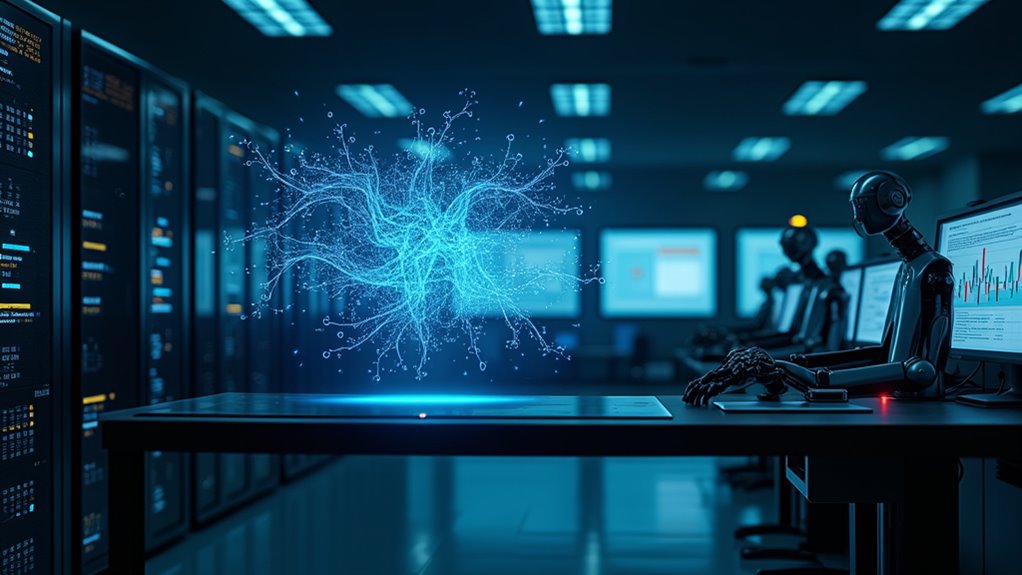Backpropagation is the brain-training algorithm that makes neural networks smarter – one epic fail at a time. Neural networks process data forward, mess up spectacularly, then use calculus to figure out where they went wrong. Like a determined student learning from mistakes, the network adjusts its internal weights through gradient calculations and the chain rule. It’s not perfect though – networks can get stuck or overwhelmed, just like humans. The deeper mechanics of this learning process reveal some fascinating parallels with biological brains.
While artificial neural networks may seem like magical black boxes that somehow learn on their own, the real workhorse behind their capabilities is backpropagation. This powerhouse algorithm, formally introduced by Rumelhart, Hinton, and Williams in 1986, is what enables neural networks to learn from their embarrassing mistakes. And boy, do they make mistakes.
The process is surprisingly straightforward, even if the math makes most people’s eyes glaze over. First, data flows through the network in a forward pass, producing outputs that are often hilariously wrong at first. Then comes the interesting part: the network calculates how badly it messed up using a loss function. Through the magic of calculus and the chain rule, backpropagation computes gradients and adjusts the network’s weights to do better next time. The advantage of this approach is that it requires just one forward and backward pass to calculate gradients, making it incredibly efficient. The training process involves matrix-based calculations to systematically update weights and minimize errors.
But it’s not all sunshine and perfectly adjusted weights. Backpropagation faces some serious challenges. Sometimes the gradients vanish into thin air, becoming so tiny they’re practically useless. Other times, they explode like an overzealous fireworks display, throwing the whole network into chaos. And don’t even get started on the dreaded local minimum trap, where networks settle for mediocrity instead of reaching their full potential. Much like the human brain’s neural structure, these networks rely on activation functions to process information between layers.
The real beauty of backpropagation lies in its versatility. It comes in different flavors: static backpropagation for straightforward feedforward networks, and recurrent backpropagation for networks that need to remember things (like your embarrassing high school moments). This flexibility makes it the go-to choice for everything from image recognition to natural language processing.
Thanks to backpropagation, neural networks have become surprisingly good at tasks that once seemed impossible for machines. It’s the unsung hero behind self-driving cars recognizing stop signs, virtual assistants understanding your mumbled requests, and algorithms predicting market trends. Not bad for an algorithm that’s fundamentally just telling networks exactly how wrong they are, over and over again.









